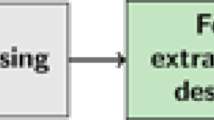Summary
A multivariate statistical method was applied on 19 quantitative and 11 qualitative traits in order to classify 105 pea landraces from the Northwest of the Iberian Peninsula. Ten elite cultivars were used as controls. The eleven qualitative characters were transformed by special coding. A procedure of data analyzed based on the combined resemblance matrix as a result of the joint resemblance matrix for quantitative and qualitative traits was constructed and described. The 105 pea landraces display a wide diversity at the infraspecific level for the 19 quantitative traits, however, just ten of them plus one qualitative trait could be considered as good descriptors for the pea landraces studied. The grouping patterns of the landraces did not reflect geographical origin, but provided taxonomically useful results, since it shows the possible use of six groups, vis. Group I (12 landraces), includes accessions which could be used for green and canned consumption, Group IV (18 landraces) includes edible-podded types and Group V (12 landraces) could be used for field pea (dry seed cultivars), Groups VI and VIII (each with 26 accessions) are also extremely interesting because of their heterogeneity.
Similar content being viewed by others
References
Amurrio, J.M., A.M., de, Ron & P.A., Casquero, 1991. Practical importance of numerical taxonomy as a useful tool in the classification of pea landraces for their different uses. Anales de Aula Dei 20: 7–15.
Amurrio, J.M., A.M., de, Ron & M.R., Escribano, 1993. Evaluation of Pisum sativum landraces from the Northwest of the Iberian Peninsula and their breeding value. Euphytica 66: 1–10.
Arunachalam, V., 1981. Genetic distance in plant breeding. Indian J. Genet. 41: 226–236.
Camussi, A., 1979. Numerical taxonomy of Italian populations of maize based on quantitative traits. Maydica 24: 161–174.
Dunn, G. & B.S., Everitt, 1982. An introduction to mathematical taxonomy. Cambridge University Press, Cambridge.
Goodman, M.M. & E., Paterniani, 1969. The races of maize III: choice of appropriate characters for racial classification. Econ. Bot. 23: 265–273.
Goodman, M.M. & R. Mck., Brid, 1977. The races of maize IV: Tentative grouping of 219 Latin American races. Econ. Bot. 31: 204–221.
Gordon, I.L., D.E., Byth & L.N., Balaam, 1972. Variance of heritability ratios estimated from phenotypic variance components. Biometrics 28: 401–415.
Gritton, E.T., 1986. Pea breeding. In: M.J., Basset (Ed). Breeding vegetable crops. AVI Publishing Company, Inc., Westport, Connecticut. p. 283–319.
Hawkes, J.G., 1980. The taxonomy of cultivated plants and its importance in plant breeding research. In. Perspective in world agriculture. CAB, Farnham Royal. p. 49–66.
Hawkes, J.G., 1981. Biosystematic studies of cultivated plants as an aid to breeding research and plant breeding. Kulturpflanze 29: 327–336.
Hedley, C.L. & M.J., Ambrose. 1981. Designing ‘leafless’ plants for improving yields of the dried pea crop. Adv. Agron. 34: 225–277.
Lawrence, G.H., 1951. Taxonomy of vascular plants. MacMillan, New York.
Makasheva, R.K., 1983. The pea. Oxonian Press Pvt. Ltd., New Delhi, Calcuta.
Mateo Box, J.M., 1961. Leguminosas de grano. Salvat Editores, Spain. p. 200–217.
McKelvey, B., 1982. Organizational systematics, University of California Press, Berkeley and Los Angeles.
Narsinghani, V.G. & V.S., Rao, 1978. Genotype × environment interaction in peas. JNKVV Res. J. 12 (1/4): 140–141.
Romesburg, H.Ch., 1984. Cluster analysis for researches. Wadsworth Inc., EEUU.
Ron, A.M., de, R., Lindner, R.A., Malvar, A., Ordás, J.J., Baladrón & J., Gil, 1991. Germplasm collecting and characterization in the North of the Iberian Peninsula. Pl. Genet. Res. Newsl. 87: 17–19.
Ron, A.M., de & A., Ordás, 1989. Estimation of variances at different significance levels. Biom. J. 31: 957–960.
Ron, A.M., de, J.M., Amurrio & N., Barcala, 1994. Colección de variedades de guisante de la Misión Biológica de Galicia-CSIC. Actas de Horticultura 12: 157–160.
Sánchez, J.J., M.M., Goodman & J.O., Rawlings, 1993. Appropriate characters for racial classification in maize. Econ. Bot. 47: 44–59.
Singh, S.B. & B.K., Tripathi, 1985. Genetic divergence in pea. Indian J. Genet. Pl. Breed. 2: 389–393.
Sneedon, J.L., 1970. Identification of garden pea varieties. (I) Grouping, arrangement, and use of continuous characters. J. Natn. Inst. Agric. Bot. 12: 1–16.
Snoad, B., 1974. A preliminary assessment of ‘leafless peas’. Euphytica 23: 257–265.
Vanderborght, T., 1983. Evaluation of Phaseolus vulgaris L. wild types and weedy forms. Plant Genet. Resour. Newsl. (I.B.P.G.R.-F.A.O.) 54: 18–25.
Vanderborght, T. & E., Depiereux, 1987. A procedure of data analysis for the study of infraspecific diversity of plants with reference to Phaseolus vulgaris L.. Biom. Praxim. 27: 113–125.
Author information
Authors and Affiliations
Rights and permissions
About this article
Cite this article
Amurrio, J.M., de Ron, A.M. & Zeven, A.C. Numerical taxonomy of Iberian pea landraces based on quantitative and qualitative characters. Euphytica 82, 195–205 (1995). https://doi.org/10.1007/BF00029561
Received:
Accepted:
Issue Date:
DOI: https://doi.org/10.1007/BF00029561




